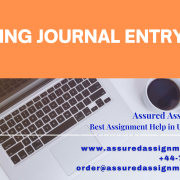Introduction
In light of the growing complexities in the business framework, the internal market has come to become competitive and more dynamic. This necessitates organizations to be effectively meeting the financial reporting frameworks. This helps the users of the financial information to gather useful data regarding the organization and thereby make effective investment decisions. In this regard, attempts have been made in the study to illustrate the significance of financial reporting to the organization as well as the users of the financial information. In addition to that, attempts have been made in the study to present a discussion on the necessity of making proper disclosures in the financial report of an organization. For the study, Woolworths Limited, an Australian-based organization has been selected.
Significance of financial reporting and qualitative aspect of financial information
A firm needs to maintain its financial statements at the end of the year. It is done according to the requirements and the transaction and events that occurred during an accounting year. The financial statements are important from the firm point of view as the statements are essential to prepare the dividend statements and share allocation (Cheng et al. 2014). The significance of financial reporting to an organization is listed below:
- The debtors, creditor’s bankers, and many other interested parties of the firm are observing the financial statements of the femur as the statements display the financial conditions of the firm and also the firm’s ability to utilize their assets and liabilities during the year-end.
- The firm needs to maintain a systematic order to maintain the financial statements that are utilized in the time of making the financial decisions of marketing strategies of the firm to develop and improve their activities and performances in the present market as well as in the future aspects (Zeff et al. 2016).
- The financial statements are made to maintain the financial balance of the organization. The statements are used and observed by the authorities, directors, and investors of the company. Thus it could be stated that the financial statements are prepared by the firm to obtain crucial financial information and undertake beneficial decisions for the firm’s future performance.
- The information regarding the financial conditions of the firm is essential as the information is being used by several other parties and entities that are directly or indirectly involved with the activities and financial transactions of the firm.
The financial statements that are made by using these statements are a part of the accounting system of the firm that needs to be done at compulsory condition. Unless the firm observes and analyses its financial statements and transactions of goods and services they are not eligible to create such a statement that will reflect the summary of the overall performances of its whole year activities (Chenget al. 2014).
Financial information is such information that will generate the essential aspects of the firm financial conditions and the gaps in their accounting activities and organizational structures. Thus the observation and proper implications of the accounting methods regarding the accounting statements are important to set the financial targets and future objectives of the firm. The shareholders and investors are also interested as they want to ensure the security and proper utilization of their investments and monetary contributions. Thus the quality of the information and statements should be up to the mark as the multipurpose use of the statements (Dhaliwal et al. 2014).
Analysis of the disclosure made by the organization in the annual reports
| Financial analysis | ||
| 2016 | 2017 | |
| Current ratio | 0.83 | 0.79 |
| Quick ratio | 0.16 | 0.15 |
| Debt/equity ratio | 0.46 | 0.29 |
| Financial leverage | 2.77 | 2.41 |
| Current assets | 31.6 | 30.52 |
| Current liabilities | 38.26 | 38.51 |
From the above analysis, it is observed that the financial operations of the company are on decreasing trend. As it is seen in the comparative analysis above it is observed that the financial ratios and activities are reducing ads the financial operations are as not as profitable. The is also identified that the firm is unable to utilize its assets to maintain its activity flow and reduction of liabilities as it increased. Thus the financial strengths have fallen.
Given the annual reports of Woolworth Limited for the current financial year, It can b apprehended that, the organization has made proper disclosures of the required disclosures in their annual reports. The management of the organization is of the view that disclosures of the accounting estimates and assumptions are necessary to facilitate the users of the financial information that includes the stakeholders of the organization with a clear understanding of the accounting principles and other policies adopted by the organization in their operation (Frias‐Aceitunoet al. 2014).
Notably, the financial reports of an organization help me to determine the performance of the entity in the current financial year and the financial stability of the organization in the market. In addition to that, it helps to get a clear understanding of the financial tools or various accounting assumptions taught are adopted by the organization. In addition to that, it helps to make a note of the accounting policies that are applied by the organization in the preparation of the financial statements. Usually, it is seen that the materiality aspect of accounting is one of the key concepts that is applied in the preparation of books of accounts (Ioannou and Serafeim, 2016). Similarly, several other financial aspects need to be catered to while making financial reporting. In regards to that, the Australian Accounting Standards Board has set out several standards that cater to disclosures of accounting information and suggest that every organization needs to comply with the requirements of the board. Woolworths Limited has complied with all the requirements of the AASB regarding Property, Plant, and equipment held by the organization (Johnston and Petacchi, 2017).
Critical analysis of the disclosures on PPE by Woolworths
A thorough analysis of the annual reports of the organization revealed that the management of the organization has made extensive disclosures in the financial reports of the organization. In addition to that, they comply with the requirements of AASB 101, which is issued by the Australian Accounting standard board for disclosures in financial reporting (Nobes, 2014). From the annual reports of the organization in the current financial year, it is seen that the organization holds a significant amount of Plant and machinery as well as equipment. The management has attempted to present a detailed report on the various accounting treatments of the assets base held by the organization. By the financial reports and the annual reports of the organization of the current financial year, it is noted that proper disclosures regarding the PPE have been made by the organization in the notes to the accounts section. All the requirements of AASB 116 have been complied with in the financial reporting of the organization.
Analysis of the extent of disclosure made regarding organizational objectives
In the annual report presented by Woolworths, it has been seen that Woolworths has concentrated on evaluating the current financial status to gain knowledge on how they are meeting three annual objectives. Eminently, the financial reports of an association help to decide the execution of the objectives in the current monetary year and the budgetary strength of the firm in the market (Loughran and McDonald, 2014). Notwithstanding that, it gets an unmistakable comprehension of the money-related instruments or different bookkeeping presumptions instructed are embraced by the association. Notwithstanding that, it makes a note of the bookkeeping arrangements that are connected by the association in the planning of the money-related proclamations. For the most part, it is seen that the materiality part of bookkeeping is one of the key ideas that is connected to the planning of the books of records (Leuz and Wysocki, 2016). Likewise, there are a few other money-related angles that should be taken into account while making budgetary detailing. Concerning that, the Australian Accounting Standards Board has set out a few gauges that take into account. To meet organizational objectives it is very important that the organization uses its financial report and compares the budget objectives with the actual result and then evaluating on the current financial performance of the company. It is seen that the company has effectively prepared its report in such a way that it is easy to interpret the current financial performance of the company in the market (Martínez‐Ferrero et al. 2015).
Conclusion
It is observed that the project is based on accounting methods and financial statements and their implications and utilization. It is to be noted that the firm has various authorities and interested parties that are involved with the firm’s activities and thus these parties and authorities keep a close observation of the accounting and financial aspects of the firm. Hence, the firm needs to maintain the accounting statements and transaction entries properly which should be of high quality. These are done for the smooth and efficient operations of the firm in the accounting year.
Reference list
Cheng, B., Ioannou, I. and Serafeim, G., 2014. Corporate social responsibility and access to finance. Strategic Management Journal, 35(1), pp.1-23.
Cheng, M., Dhaliwal, D. and Zhang, Y., 2013. Does investment efficiency improve after the disclosure of material weaknesses in internal control over financial reporting? Journal of Accounting and Economics, 56(1), pp.1-18.
Dhaliwal, D., Li, O.Z., Tsang, A. and Yang, Y.G., 2014. Corporate social responsibility disclosure and the cost of equity capital: The roles of stakeholder orientation and financial transparency. Journal of Accounting and Public Policy, 33(4), pp.328-355.
Frias‐Aceituno, J.V., Rodríguez‐Ariza, L. and Garcia‐Sánchez, I.M., 2014. Explanatory factors of integrated sustainability and financial reporting. Business strategy and the environment, 23(1), pp.56-72.
Ioannou, I. and Serafeim, G., 2016. The consequences of mandatory corporate sustainability reporting: evidence from four countries.
Johnston, R. and Petacchi, R., 2017. Regulatory oversight of financial reporting: Securities and Exchange Commission comment letters. Contemporary Accounting Research, 34(2), pp.1128-1155.
Lawrence, A., 2013. Individual investors and financial disclosure. Journal of Accounting and Economics, 56(1), pp.130-147.
Leuz, C. and Wysocki, P.D., 2016. The economics of disclosure and financial reporting regulation: Evidence and suggestions for future research. Journal of Accounting Research, 54(2), pp.525-622.
Loughran, T. and McDonald, B., 2014. Measuring readability in financial disclosures. The Journal of Finance, 69(4), pp.1643-1671.
Martínez‐Ferrero, J., Garcia‐Sanchez, I.M. and Cuadrado‐Ballesteros, B., 2015. Effect of financial reporting quality on sustainability information disclosure. Corporate Social Responsibility and Environmental Management, 22(1), pp.45-64.
Nobes, C., 2014. International Classification of Financial Reporting 3e. Routledge.
Zeff, S.A., van der Wel, F. and Camfferman, C., 2016. Company financial reporting: A historical and comparative study of the Dutch regulatory process. Routledge.










